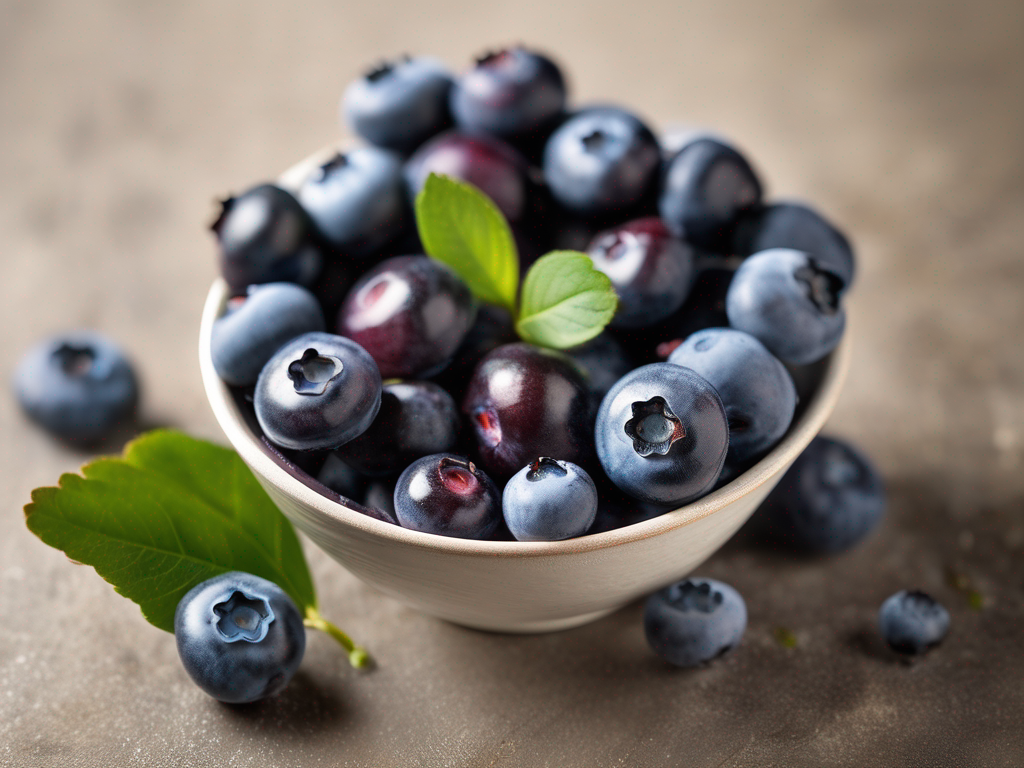
Signs that Half Highbush Blueberries Have Gone Bad
Get Your Free Food Safety Cheat Sheet
30 most common foods with instant answers. Print it and stick it on your fridge—completely free!
Signs that Half Highbush Blueberries Have Gone Bad
When it comes to enjoying fresh, delicious Half Highbush Blueberries, it's essential to know how to identify when they have gone bad. Blueberries are a popular and nutritious fruit, packed with antioxidants and vitamins. However, improper storage or handling can lead to spoilage, affecting their taste and safety. In this blog post, we will explore the signs that Half Highbush Blueberries have gone bad and should be thrown out. (Half highbush blueberry)
Understanding Half Highbush Blueberries
Before we delve into the signs of spoilage, let's understand what Half Highbush Blueberries are. These blueberries are a hybrid variety that combines traits of both highbush and lowbush blueberries. They are known for their sweet flavor and firm texture, making them a favorite ingredient in various dishes and snacks.
Half Highbush Blueberries are versatile and can be enjoyed fresh, frozen, or in cooked recipes. They are a rich source of antioxidants, fiber, and Vitamin C, making them a healthy addition to your diet. To learn more about Half Highbush Blueberries and their culinary uses, check out this link.
Signs that Half Highbush Blueberries Have Gone Bad
Here are some key indicators that your Half Highbush Blueberries may have spoiled and should be discarded:
1. Mold Growth
- Visible Mold: If you notice fuzzy, white, or green mold growing on the surface of the blueberries, it is a clear sign of spoilage.
- Musty Odor: Mold growth is often accompanied by a musty or off-putting smell.
2. Soft or Mushy Texture
- Loss of Firmness: Fresh Half Highbush Blueberries should be plump and firm. If they feel soft or mushy to the touch, they may have started to deteriorate.
- Wrinkled Skin: Wrinkled or shriveled skin is another indicator of blueberries past their prime.
3. Discoloration
- Dark Spots: Dark or discolored spots on the blueberries indicate decay and should be avoided.
- Browning: Blueberries that have turned brown or have brown patches are no longer safe to eat.
4. Off-putting Smell
- Foul Odor: If your blueberries emit a sour, fermented, or foul smell, it's a sign that they have spoiled.
- Chemical Odors: Any unusual chemical or off-putting odors should not be ignored.
5. Excessive Moisture
- Juiciness: While blueberries are naturally juicy, excessive moisture or leaking juices can be a sign of spoilage.
- Slimy Texture: If the blueberries feel slimy or excessively wet, it's best to discard them.
How to Properly Store Half Highbush Blueberries
To extend the shelf life of your Half Highbush Blueberries and prevent spoilage, follow these storage tips:
- Refrigeration: Store fresh blueberries in a breathable container in the refrigerator. Avoid sealing them in airtight bags, as moisture can promote mold growth.
- Washing: Only wash blueberries right before eating or using them in recipes. Excess moisture can accelerate decay.
- Freezing: If you have excess blueberries, freeze them in a single layer on a baking sheet before transferring them to a freezer-safe bag or container.
- Check for Spoilage: Regularly inspect your blueberries for any signs of mold, softness, or discoloration. Remove any spoiled berries to prevent contamination. (Half highbush blueberry)
Conclusion
In conclusion, Half Highbush Blueberries are a delicious and nutritious fruit that should be enjoyed at their peak freshness. By knowing the signs of spoilage and following proper storage practices, you can ensure that your blueberries stay safe to eat and maintain their quality. If you notice any of the aforementioned signs of spoilage in your blueberries, it's best to err on the side of caution and discard them. Remember, when in doubt, throw it out!
Authoritative Food Safety References
These agencies and university labs inform every tip and health precaution we publish.
USDA FoodKeeper – Cold Storage Guidelines
Official refrigerator, freezer, and pantry timelines maintained by the U.S. Department of Agriculture.
Visit USDA FoodKeeperFDA Produce Safety Rule & Grower Guidance
Field-to-fridge handling practices that prevent contamination of fruits, vegetables, and leafy greens.
Visit FDA Produce SafetyCDC Foodborne Illness Prevention Hub
Surveillance-backed guidance on pathogens, symptoms, and steps to reduce foodborne illness risk.
Visit CDC Food SafetyUC Davis Postharvest Technology Center
University research detailing optimal storage atmospheres for produce after harvest.
Visit UC Davis PostharvestPenn State Extension – Home Food Preservation & Safety
Peer-reviewed extension bulletins on safe canning, chilling, and reheating practices.
Visit Penn State ExtensionGet Your Free Food Safety Cheat Sheet
30 most common foods with instant answers. Print it and stick it on your fridge—completely free! Want more? Upgrade to the complete guide with 70+ foods.
Scan your food directly and get instant safety info using our AI-powered camera feature.